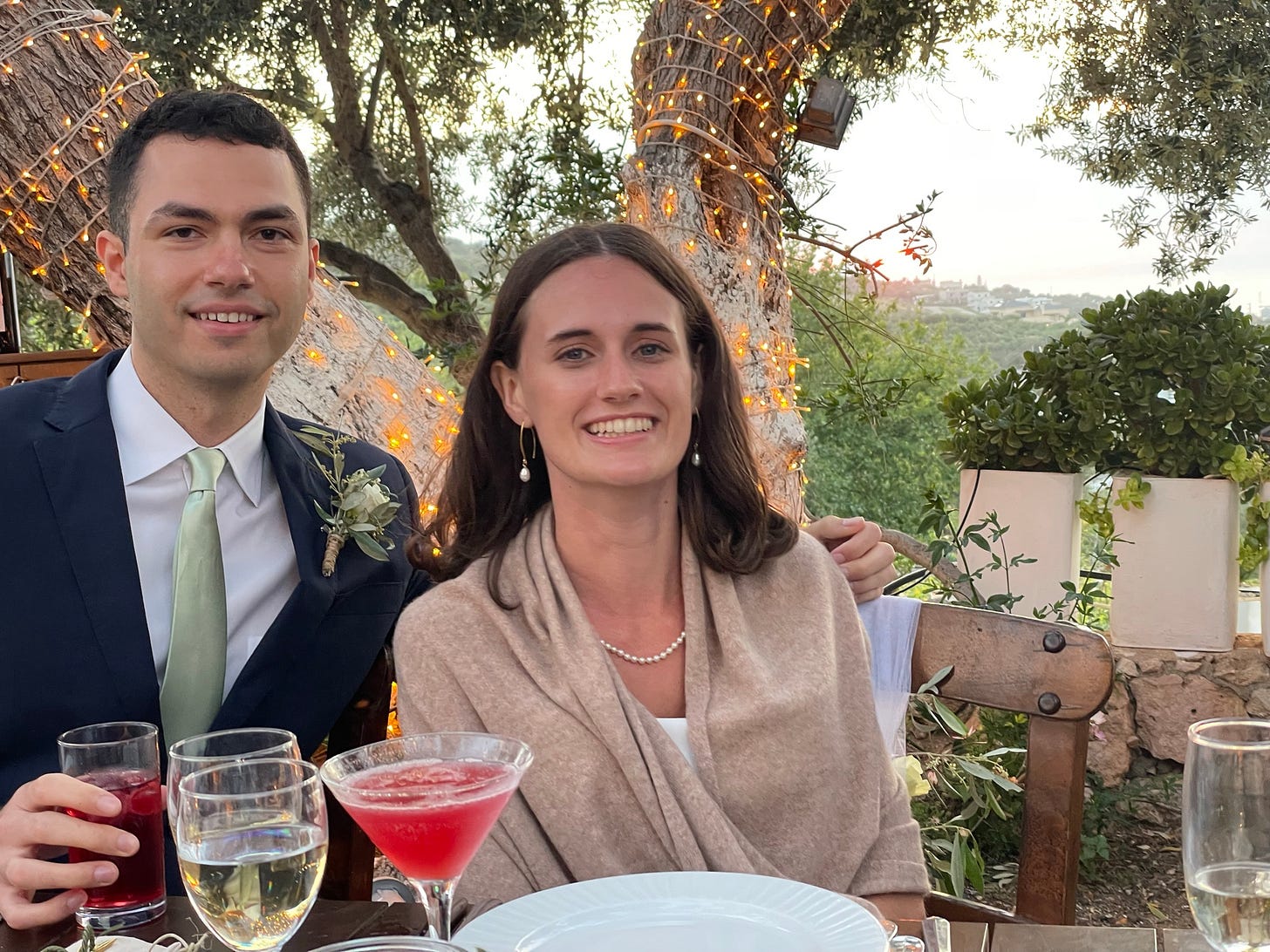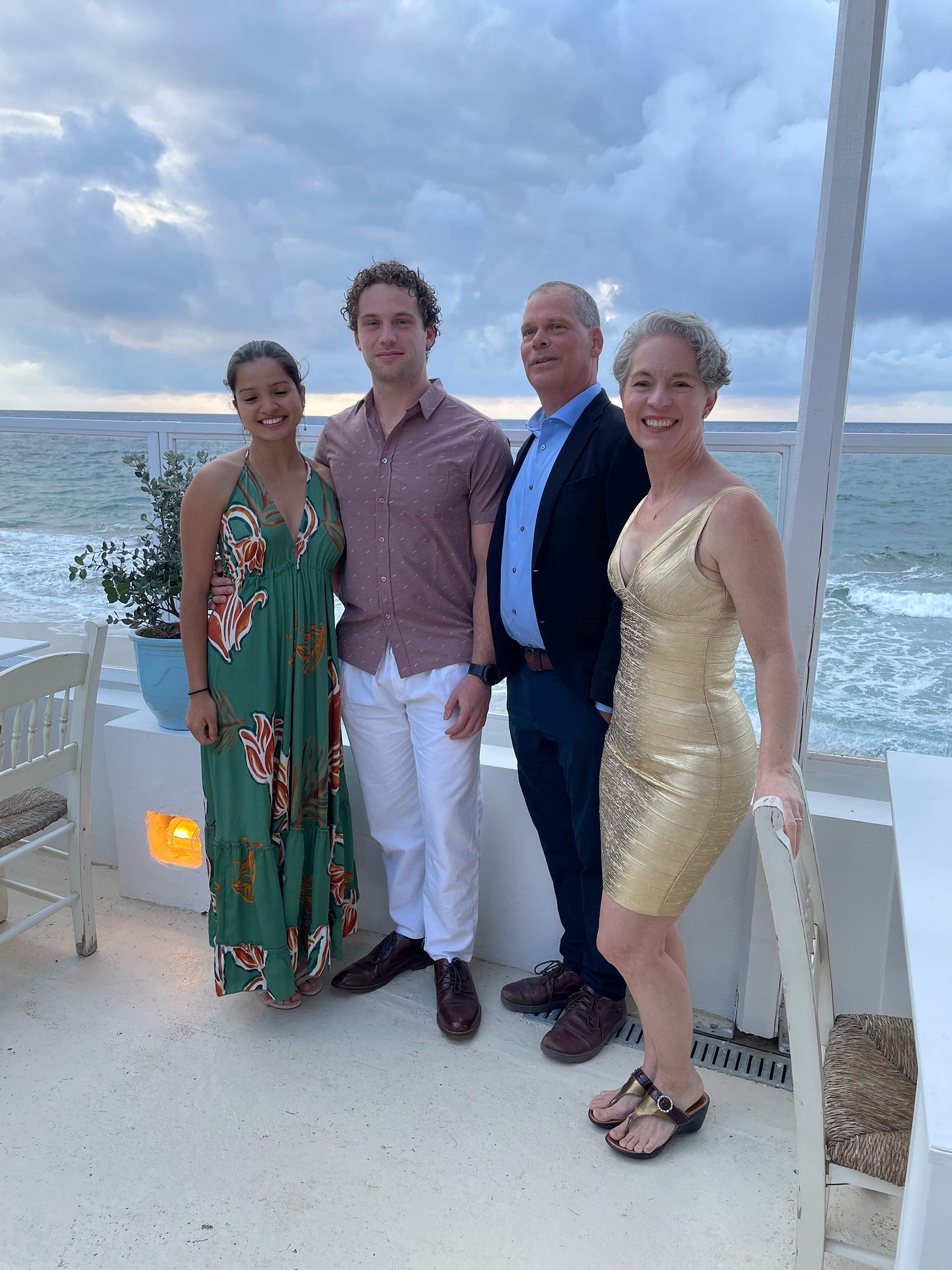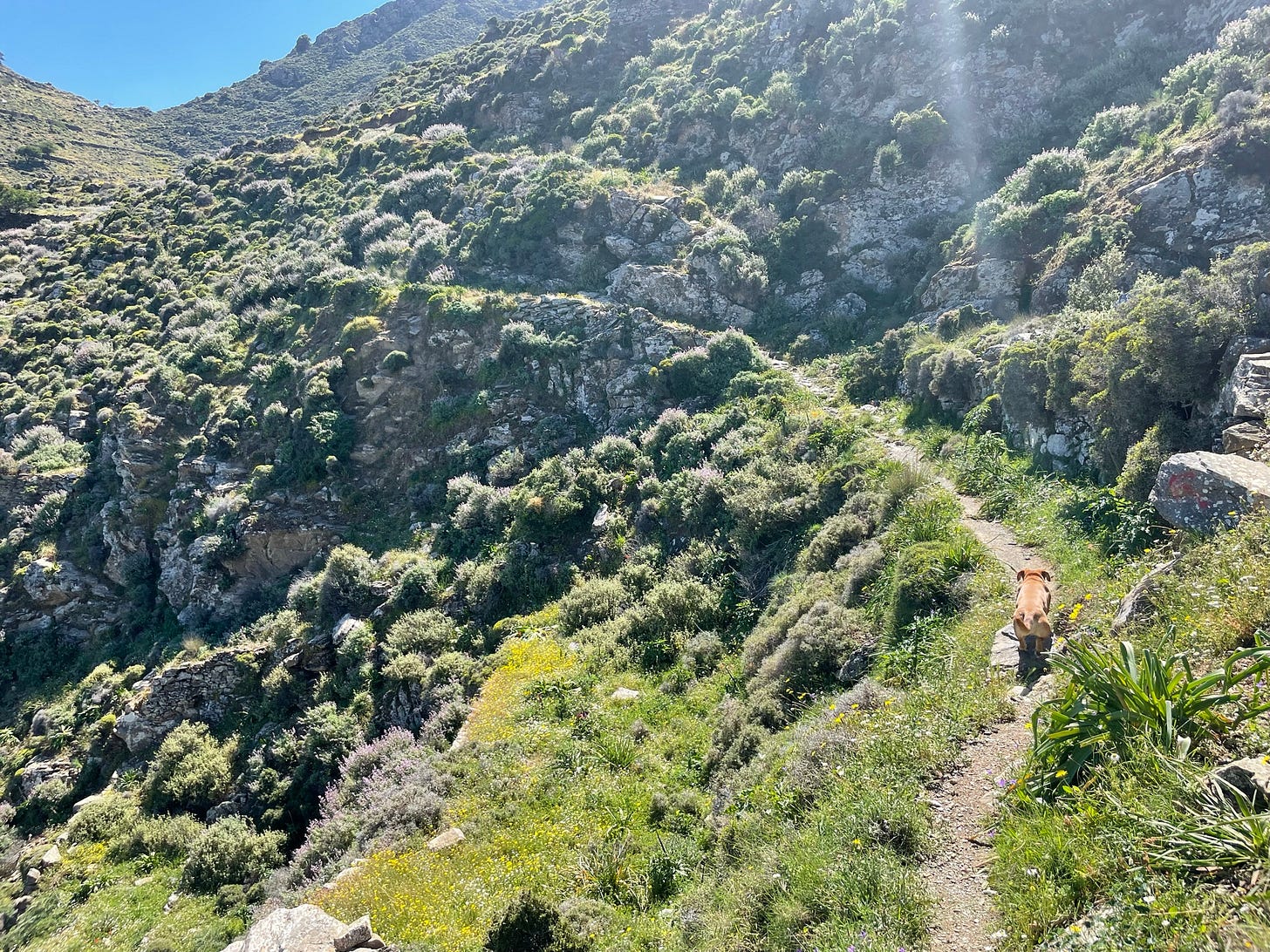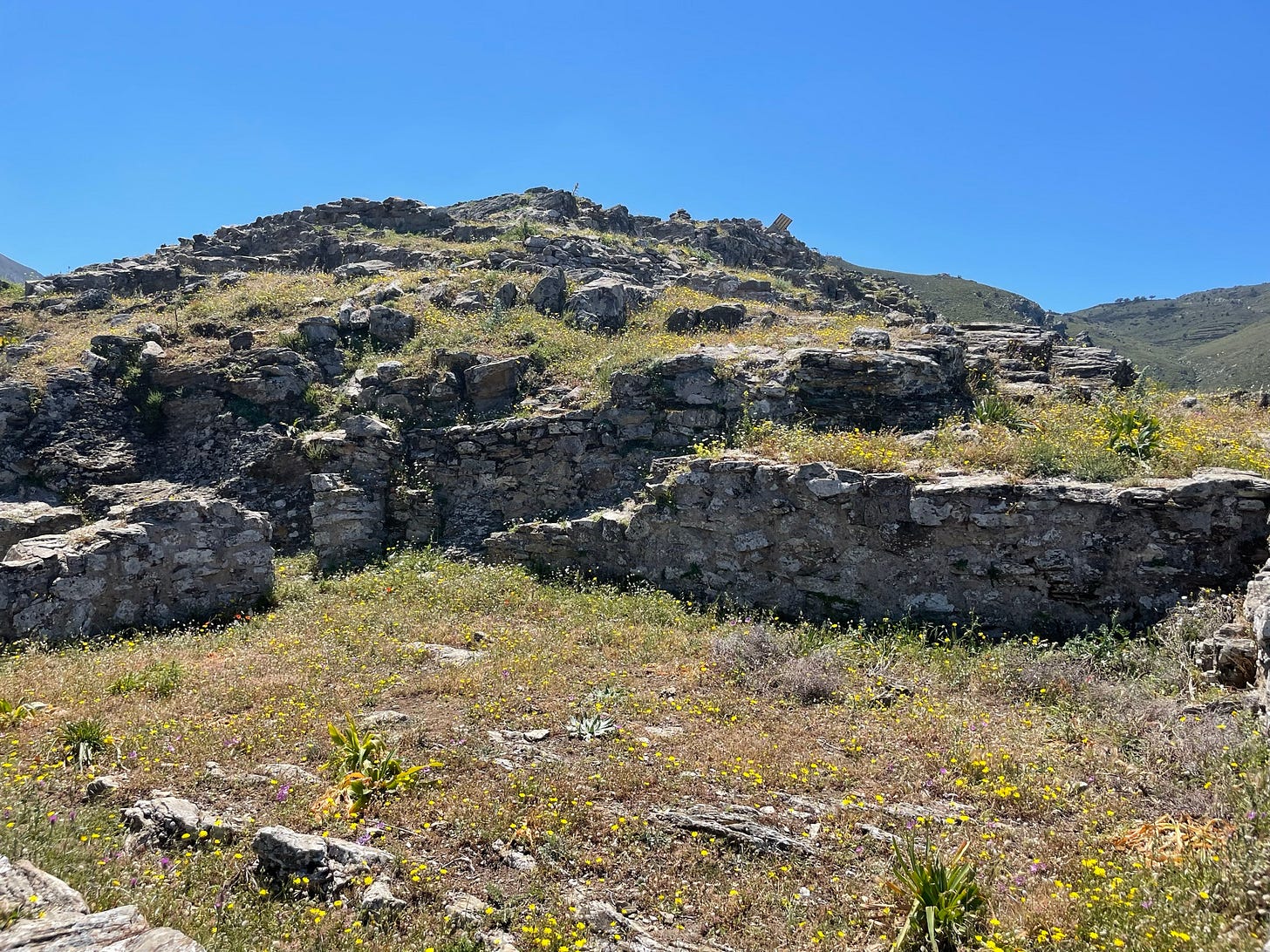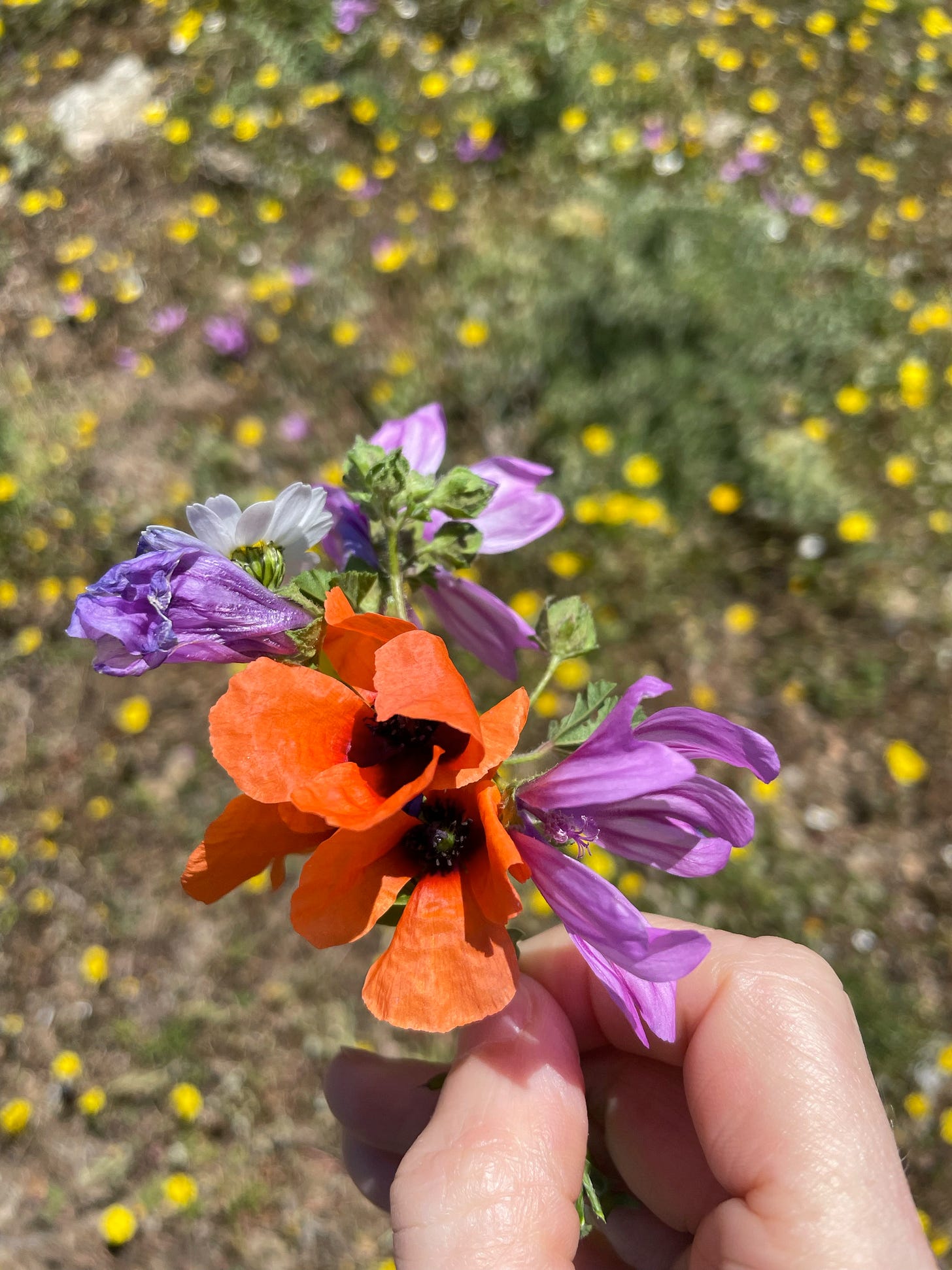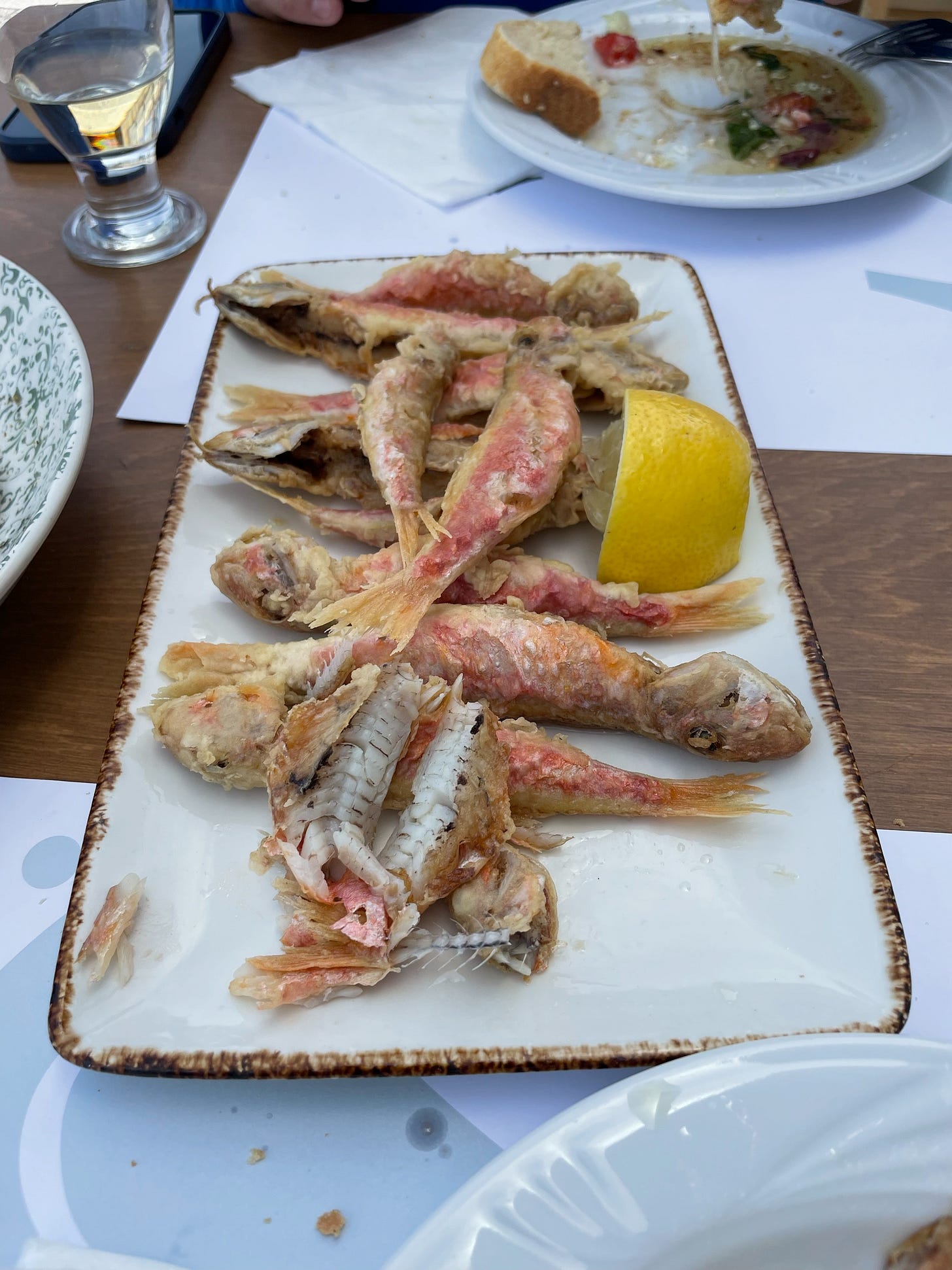Kavousi 2023
— Amy Hackney Blackwell, Christopher Blackwell
This is a long story, so we’ve divided it across several parts:
1. Kavousi: A Love Story (Introduction)
2. Kavousi 1990
3. Kavousi 2023 ← You are here
4. Kavousi 2024
Kavousi was much on my mind in the first year I knew Chris. He heard all about how I’d spent the summer working on an archaeological dig on top of a mountain.
Thirty-three years went by. I always thought it would be fun to show Chris where I’d spent the months right before I met him, but there were so many other places we had to go, journeying to the remoter regions of Crete never bubbled up to the top of the list.
Then our friend George Coundoussias announced that his son, Demitri, would be getting married in Crete. And that gave us our excuse.
Rethymno, May 5-7
Demitri and Maggie, the reason we came to Rethymno.
George is from Gavalou, but Demitri’s wedding took place in Rethymno, in western Crete. Crete might be part of the nation-state of Greece, but it is physically and culturally distant from the mainland. This was just as much a destination wedding for George’s Greek relatives as it was for the rest of us.
This time, we sailed to Crete on the overnight ferry. We’d flown into Athens the day before so Chris could meet with Greek collaborators. We spent a day discovering that Athens had indeed become impossibly overtouristed, or at least the Acropolis had, and Kolonaki Square was under construction. We were happy to head to Piraeus to board our ferry as soon as it opened at 6 pm.
No deck class for us this time–we sprang for a double cabin, which ensured both a comfortable night’s sleep and considerable deference from the stewards. In the morning, they greeted us with broad smiles before turning to kick awake the deck class passengers bunked down in sleeping bags in the snack bar and under stairwells.
We cruised into the Heraklion harbor at dawn on a drizzly morning.
I’d initially intended to take the bus to Rethymno, just like old times. But times have changed, and you can now hire a taxi to drive between cities. (Actually, you could in 1990, too; I just didn’t spend money like that.) For €100, we could be in Rethymno in less than an hour.
The drive was familiar, and yet it wasn’t. A portion of the hillside had collapsed at one point, reducing the coastal road to one lane. It drizzled the whole way–evidently it DOES rain in Crete!
Rainy Rethymno
We stayed at the Rimondi Estate hotel in the Old Town. There are no cars allowed in the Old Town’s warren of narrow streets, all of which seem to sell tourist schlock. This place must be impassible in high summer.
George hosted an indulgent rehearsal dinner at the lovely seaside restaurant Paraplous. It was so cold and windy!
We’d all packed for a balmy spring wedding!
The wedding itself was at a lovely place in the countryside called Agreco Farms (you can buy their products at the Heraklion airport duty-free). The owners have really worked the agritourismo angle, creating a charming facility that someone still seems mostly genuine.
It was an extraordinarily beautiful wedding.
To Kavousi, May 7
We could have taken the bus to Kavousi, but that would have taken all day. And we’re not students anymore; we can exchange money for convenience if we feel like it!
In Rethymno, we’d basically hired a driver named Nectarios to take us to and from wedding activities. But Nectarios was a strictly local driver, so to get to Kavousi we needed someone with more scope. Welcome Pickups hooked us up with Aristides Psarakis from Heraklion, who collected us in a minivan set up for family transport.
And how times have changed! It used to take the bus a good two hours just to go from Heraklion to Kavousi along the old coastal road. Now there’s a fancy highway through the mountains and bypassing Agios Nikolaus. The total trip from Rethymno to Kavousi took under two hours, including a coffee break at a Gregory’s (Greek truck stop).
I’d found an AirBnB on a small whitewashed street draped in hot pink bouganvillea.
Our street.
Kavousi is getting fancy, though, and our apartment had all the amenities (except for a washing machine) shoe-horned into an ancient stone and whitewash dwelling. Evidently it had belonged to our host’s aunt and he’d done it up to rent to tourists.
It was Sunday, and we were worried about finding food, so the first thing we did was walk down to the main street. There we discovered a new coffee bar and bakery and a tiny grocery store selling fresh eggs and local sausages. Food anxiety alleviated, we ventured down the highway toward the Pharangi taverna.
Alas, the Pharangi is closed!
But a new establishment had opened next door, a cocktail and wine bar called Chez Georges. Our drinks came with a free snack of Japanese plums–the ripe fruit of the moment.
George and Amy
I showed George a couple of pictures from 1990. It turned out that he recognized Manolis. In fact, Manolis had been in town just the day before; he lives in Ierapetra and works as an accountant now. George immediately called Manolis, who agreed to meet us at Chez George the next night.
That evening, we dined at the taverna where I stayed back in 1990. It’s now called Ndakos, after the traditional Cretan rusk salad, and run by an energetic young man. The menu is more extensive than it used to be, featuring several Cretan specialties, which is the fashion nowadays. The portions are HUGE, even by the already generous standards of Greek tavernas. We had more Japanese plums for dessert.
The proprietor remembered the archaeologists who used to come to the village; he would have been a kid when I was there. Everyone in Kavousi remembers the digs!
May 8: Return to the Kastro!
I awoke to the smell of Chris frying the local sausages we’d bought the previous day. He boiled eggs, too, for us to carry up the mountain.
We walked uphill through the town past the old apothiki and onto the dirt trail leading through the olive fields. I had never walked this part of the path before. I knew it was possible to reach the Kastro on foot from Kavousi, but we always rode the trucks up to Vronda.
This is part of the E4 trail.
A little brown dog joined us. After she walked with us for about an hour, we realized that she was de facto our dog for the day. We named her Scylla.
Scylla trots up the path.
The kalderimi path seemed familiar and yet not. So much memory can disappear after 33 years, especially if you don’t have any photographs of it and have lost contact with anyone who shared the experience.
Up and up we walked.
The Kastro is up there.
The last part of the path is fairly exposed, dusty, and narrow. It actually frightened me to walk on it; that was surprising, as was my sense of vertigo walking around parts of the site itself. Fear of heights was not something that ever occurred to me when I was younger.
Maybe I’ve just grown cowardly with age, but there’s an edge right there!
After 33 years, I’m back at my old workplace!
Chris observed, “When you said you climbed a mountain every day, I had no idea that this is what you meant!”
The informational sign describing the site.
One of the 1990 dig organizers had advised everyone to wear long pants due to the many spiky plants in Crete. Most of us younger workers disregarded that advice, and I never noticed that the landscape was especially spiky. That was probably because the path and the site itself were so heavily traveled in those days, which trampled down the spines. Today, the spiky plants were very much in evidence. The place was overgrown with thistles that stuck right through my shoes.
Back in 1990, there were no plants whatsoever up here.
The place was awash in spring wildflowers. I picked my mom a Mother’s Day bouquet.
Another thing that’s different is that the site was “restored” in the mid-90s, after the excavation was complete. The walls are actual walls now, much higher than they used to be.
I had to climb over walls to get into Donald’s old trench.
It was nice to be back up there. I’d always remembered the Kastro as a beautiful place, with stunning views all around. I was glad to see that I’d remembered it correctly. I sat on the wall of my old trench and peeled hard-boiled eggs to feed the dog. She liked the yolks, and enjoyed crunching up the shells. I ate the whites.
Chris gave the dog some water.
Chris tried to fly his drone, but the wind was fierce, and Scylla nearly lost her mind barking at the buzzing thing. Chris feared she might follow it over a cliff edge, so he pulled it in.
Scylla says this is a No-Drone Zone!
We’d intended to walk back down to Kavousi via the gorge path, where I’d never been before–it’s astonishing how much I didn’t learn about Kavousi in an entire summer living there! Two things changed our minds. One, we weren’t sure Scylla would find her way back home if we didn’t retrace our steps. Two, as we crested the pass to the Kastro, we encountered a mountain guide walking in the opposite direction, from the gorge. He said the trail was “a little exposed.” “A little exposed” is mountain-guide language for “terrifying narrow broken trail along a deadly sheer cliff-face”.
So we simply reversed our steps, taking the path I’d walked at the end of every workday that summer. That was the right way to do this day, anyway.
Chris descending from the Kastro.
Meeting an old friend
At sunset, we walked back down the hill to Chez Georges. Manolis arrived to meet us, and we spent a lovely evening together.
We hadn’t changed a bit!
Though our worries about finding food the previous day had come to nothing, tonight there was in fact nowhere to eat in Kavousi. Chez Georges is just a wine and cocktail bar, but George does serve snacks in addition to drinks and Japanese plums. He also sells local honey and large sacks of dried up bread. Chris asked what those things were.
Manolis explained that in the past, Cretans baked bread just once a year. They dried it rock hard for storage (not hard in such a dry climate) and used it to make a dish called Dakos (or ntakos). This is a dried-up rusk soaked with water and topped with chopped tomatoes and olive oil. Manolis had George make one and bring it to us.
Our dinner: dakos and the inevitable Japanese plums!
Elections were coming up, and the taverna saw a steady stream of visitors from various parties, communists and conservatives greeting one another in a friendly manner while they handed out political fliers.
I asked Manolis whether the locals had liked or hated all the young American archaeologists who used to take over the town in the summers. I’d worried that we were a pain in the butt, rich and entitled. Manolis said no, it was great. The dig paid construction union wages, which brought in more income than locals could ever earn on their own, and it was fun. We must not have been so bad.
May 9: Back to Heraklion
Manolis had wanted to arrange a visit for us at INSTAP, the research center for eastern Crete archaeology. Alas, we had to leave Kavousi. We’d arranged for Aristidis to come collect us and bring us back to Heraklion. Evidently, it’s normal for Greek taxi drivers to invest an hour or more of driving to pick up a fare. The taxi service is convenient, but it does add up, which is one reason we mostly rented cars the following year.
I tried to persuade Chris that we needed to visit Knossos, but he refused. Instead, we toured the rather excellent Museum of Greek Technology and had a nice seafood lunch. The next day, we flew to Athens and started our Ancient Paths hike, and that’s another story.
Tasty fish!
This is a long story, so we’ve divided it across several parts:
1. Kavousi: A Love Story (Introduction)
2. Kavousi 1990
3. Kavousi 2023 ← You are here
4. Kavousi 2024




